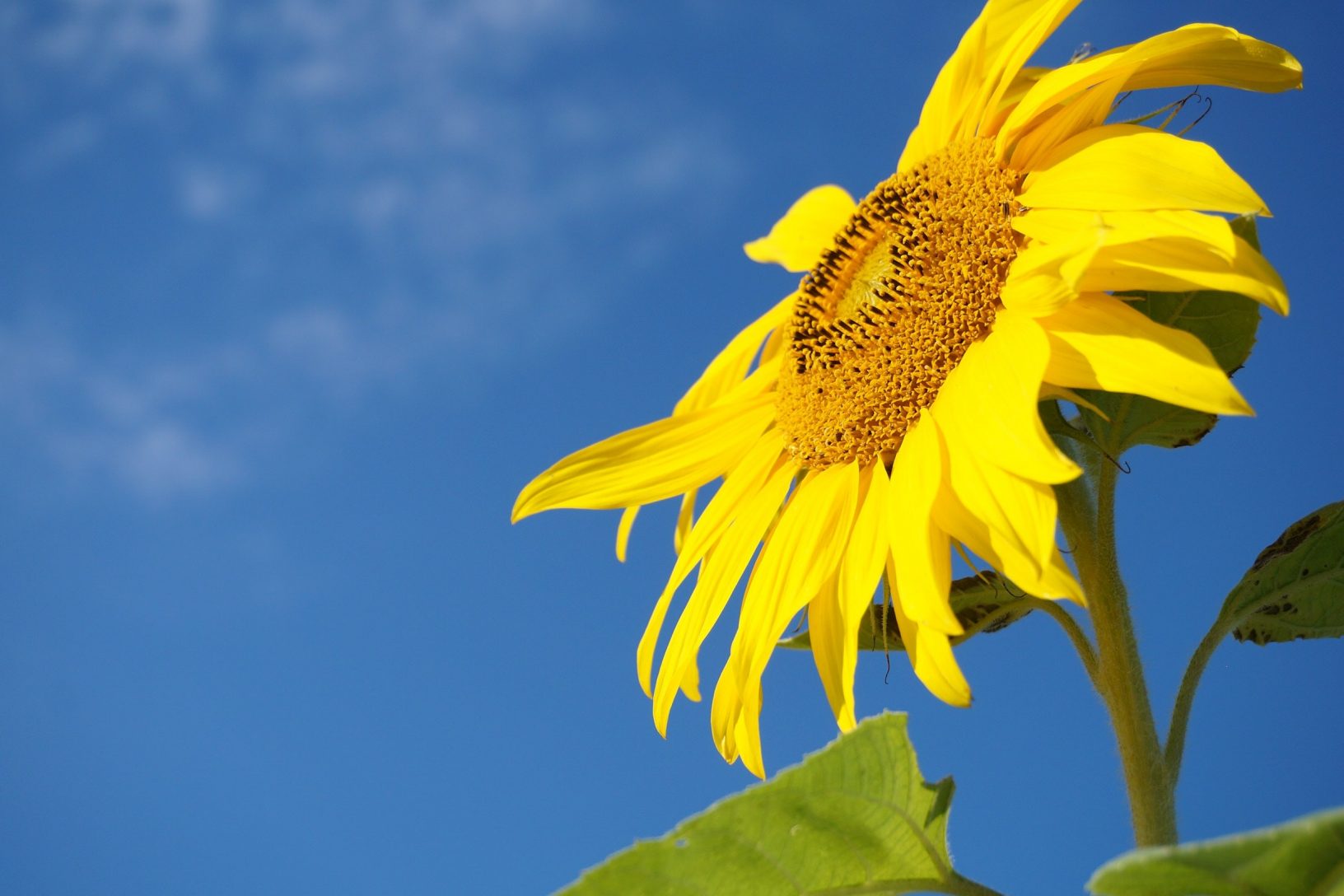Helpful information
Timing: March - April (sow seeds into pots), Late April - May (sow seeds directly into the ground)
Where to do it: Outdoors
Garden space: Large garden, small garden, balcony

Timing: March - April (sow seeds into pots), Late April - May (sow seeds directly into the ground)
Where to do it: Outdoors
Garden space: Large garden, small garden, balcony

Few plants herald the summer quite like the sunflower. Because they are quite straightforward to grow, they are a common sight in many gardens, community gardens and allotments. They can quickly draw the eye with their bright colour and towering growth.
The sunflower got its name from the fact that its flower will often point itself towards the sun. Ancient Greek mythology tells us that this is because sunflowers were created from Clytie, a jealous nymph who betrayed Apollo the god of the sun for finding another love. She was buried and was reborn in the form of a sunflower. Her love for Apollo carries on, hence why she still watches him as he arcs above her in the sky.
The scientific story is a bit different. The stem of the sunflowers grows longer when it is sunny. As a result, the head of the plant turns with it. This helps the sunflower as the turning motion helps the sun warm the many florets in the flower head. It also helps it attract potential insect pollinators.
Essential items
Our step by step guide to growing sunflowers from seed will help you do it with ease.
Step 1: Gather everything you need
Find a comfortable spot to work. Get all the equipment you will need in one place.
Step 2: Fill pot with compost
Fill a small pot (around 9cm across) almost to the top with compost. Seed sowing compost is naturally nice and fine. If using multi-purpose compost, make sure to break up any large lumps of soil. Gently tap your pot against the table / surface you are working on so the compost settles.
You don't have to sow sunflower seeds into small pots first. You can sow them straight into prepared soil in their final growing place, whether that's in the ground or in a container. If you are doing this, wait until a bit later in the year - late April to early May - when the weather has warmed. You may also need to check for slugs and snails enjoying your little plants!
Step 3: Make a hole for the seed and place seed in it
Use a pencil or similar pointed object to make small hole in the centre of the compost. Place one sunflower seed in the hole.
Step 4: Cover with compost
Sprinkle a little compost over the seed to cover it.
Step 5: Gently water
Water carefully using a watering can with a rose attachment. Try not to disturb the compost and seed when you water.
Step 6: Add plant label and put in position
Write your plant label and place at the edge of the pot. Position your pot somewhere warm. A windowsill inside, or sunny sheltered spot outside, are good options.

Continue to water and watch your seedlings as they grow. Once they have outgrown their small pot, you can plant them out into their final spot in the garden. Try and wait until at least late April to do this, once the weather has warmed.
Keep watering your sunflowers regularly as they grow. Sunflowers can require more nutrients than other plants to reach their full potential height. Make sure the soil they are growing in has plenty of compost or well-rotted manure dug in before planting and give them a feed once a week if you want an impressively tall plant.
Many tall sunflowers can hold the weight of their flower head without extra support. But, if you feel like your plant could use help to protect it from strong winds, stake and tie it in. Put a bamboo stick next to the sunflower and use garden string to loosely tie the plant to the stick.
In late summer or early autumn, once your sunflower has completely finished flowering, you could save the seeds for the following year. This is a great way to get free plants!
Sunflowers are great for younger gardeners to grow. Here are some ways to get them involved: